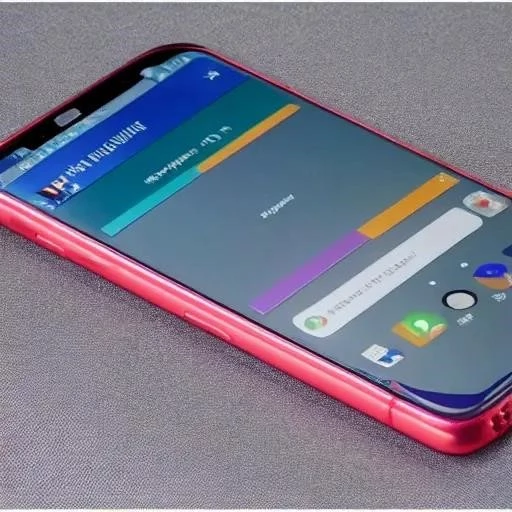Unleash the Giant: Why Connecting Your Mobile to a Monitor is the Game-Changing Productivity Hack You NEED!
In an era defined by constant innovation and the relentless pursuit of efficiency‚ our smartphones have evolved into incredibly powerful pocket computers. We carry devices capable of processing complex data‚ rendering stunning graphics‚ and managing our entire digital lives. Yet‚ for all their prodigious power‚ they remain tethered to the confines of a small screen‚ often limiting our true potential. This inherent contradiction has long presented a formidable challenge‚ compelling users to compromise between portability and immersive productivity.
However‚ a remarkable shift is underway‚ transforming how we interact with our most personal tech. The once-futuristic concept of seamlessly expanding your mobile experience onto a larger display is not just a pipe dream; it’s a vibrant‚ accessible reality. Imagine effortlessly transitioning from a compact device to a full-fledged desktop environment‚ harnessing unprecedented capabilities for work‚ entertainment‚ and creative endeavors. This technological leap is fundamentally reshaping our expectations‚ promising a future where the distinction between mobile and desktop computing gracefully blurs.
Bridging the Gap: Essential Mobile-to-Monitor Connection Insights
The table below provides a concise overview of the primary methods and compelling advantages of connecting your smartphone to an external monitor‚ offering a foundational understanding for anyone looking to optimize their digital workspace.
| Category | Description/Method | Key Benefits |
|---|---|---|
| Wired Connections |
|
|
| Wireless Connections |
|
|
| General Benefits | Enlarged workspace for multitasking‚ enhanced media consumption‚ superior gaming experience‚ professional presentations‚ and improved accessibility. |
|
For more detailed technical specifications on mobile display standards‚ visit: DisplayPort.org
The Dawn of the “Phone-as-PC” Era
The technical underpinnings making this possible are surprisingly robust. Modern smartphones‚ especially those in the premium segment‚ are equipped with chipsets rivaling entry-level laptops‚ featuring multi-core CPUs and powerful GPUs. Crucially‚ many now boast USB-C ports supporting DisplayPort Alternate Mode‚ allowing a direct video signal to be transmitted over the cable. This means a simple USB-C to HDMI adapter is often all that stands between your phone and a monitor‚ transforming your pocket device into a formidable workstation.
Industry leaders are keenly aware of this burgeoning potential‚ investing heavily in user experiences that capitalize on larger screens. Samsung’s DeX‚ for instance‚ has pioneered a desktop-like interface for its flagship Galaxy devices‚ complete with a taskbar‚ resizable windows‚ and full keyboard/mouse support. Motorola’s Ready For platform offers similar functionalities‚ extending its phones’ capabilities to monitors‚ TVs‚ and even laptops. “This isn’t just about mirroring your screen; it’s about a fundamental reimagining of what a smartphone can be‚” asserts Dr. Alistair Finch‚ a renowned futurist specializing in mobile computing. “We are witnessing the convergence of form and function‚ driven by increasingly sophisticated hardware and intelligent software.”
Beyond Productivity: A Universe of Possibilities
The advantages extend far beyond mere productivity. Imagine conducting a compelling presentation directly from your phone‚ effortlessly projecting slides onto a conference room display. Picture yourself editing a document on a full-sized monitor while simultaneously engaging in a video call on your phone’s screen. For gamers‚ the experience is transformative‚ shifting from a cramped portable display to an expansive‚ high-refresh-rate monitor‚ providing a truly immersive playing field for graphically intensive titles. Content creators can now leverage their phone’s advanced cameras for capturing footage‚ then connect to a monitor for more precise editing‚ greatly streamlining their workflow.
This evolving ecosystem also heralds significant benefits for accessibility. Users with visual impairments can utilize larger text and magnified interfaces with greater comfort‚ while those with motor challenges can employ external keyboards and mice with enhanced precision. The flexibility offered by connecting a mobile to a monitor truly democratizes computing power‚ making advanced functionalities available to a broader audience without the prohibitive cost of multiple dedicated devices. It’s a remarkably effective strategy for maximizing the utility of existing technology‚ offering a sustainable path forward.
The Future is Fluid: Your Phone‚ Your Hub
Looking ahead‚ the trajectory is undeniably clear: our mobile devices are destined to become the central processing units for virtually all our digital interactions. As 5G networks become ubiquitous and cloud computing capabilities grow exponentially‚ the need for bulky‚ stationary computers will diminish further. By integrating insights from AI-driven interfaces and ever-more powerful chipsets‚ future smartphones will not just connect to monitors but will intelligently adapt their entire operating environment to the display they’re tethered to‚ offering a truly personalized and dynamic computing experience.
The era of squinting at tiny screens is rapidly drawing to a close. Embrace the future where your pocket-sized powerhouse can seamlessly transform into a desktop titan. The technology is here‚ the benefits are profound‚ and the possibilities are exhilarating. It’s time to unlock the full potential of your mobile device and experience computing without boundaries. Don’t just carry a smartphone; carry your entire computing universe.

